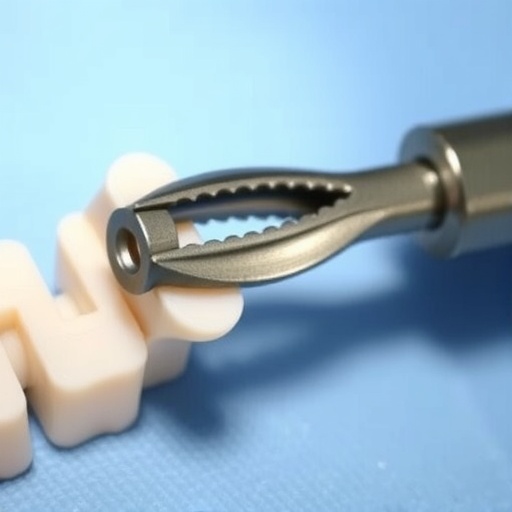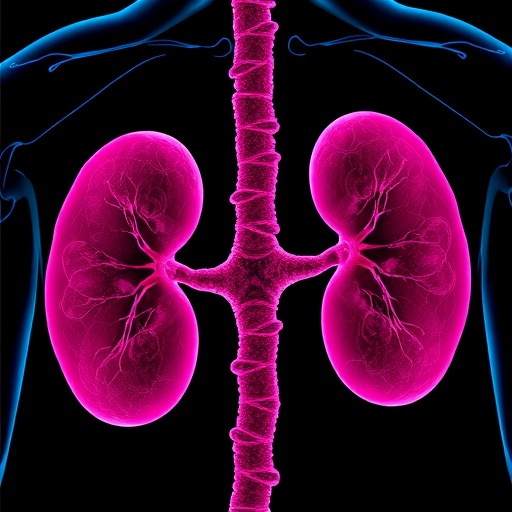
In a groundbreaking study, researchers Zuo, Yen, and Hung present innovative advancements in the field of orthopedic surgery with their exploration of digital guidance systems combined with handheld robotic assistance for tibial tunnel placement during anterior cruciate ligament (ACL) reconstruction. The meticulous research published in the Journal of Medical Biology and Engineering sheds light on procedural efficiencies as well as potential enhancements in surgical outcomes.
Anterior cruciate ligament injuries represent a significant proportion of knee injuries, especially among athletes engaged in sports requiring rapid direction changes. Traditional surgical techniques for ACL reconstruction, while effective, face challenges that include variability in tunnel placement, which can impact stability and function post-surgery. The researchers have sought to address these limitations by implementing a dual approach utilizing both a digital guide and robotic assistance, making strides towards enhancing the accuracy of tunnel placements.
The cadaver study meticulously designed by the research team involved a comprehensive evaluation of the novel methodology. By employing anatomical cadavers, they were able to simulate real-life surgical environments while maintaining ethical rigor. The results yielded from this study provide compelling evidence suggesting that the integration of digital imaging and robotic technology can result in smoother operations and higher precision in constructing the tibial tunnel.
As surgeries become increasingly influenced by technological innovations, the collaborative effort of the digital guide and the handheld robot illustrates a pivotal shift from traditional practices toward a more refined and methodical approach to surgical procedures. This hybrid model not only enables surgeons to visualize surgical points with unprecedented accuracy but also streamlines the physical execution of these complex manipulations through robotic assistance.
One of the noteworthy features of this study is the aspect of surgical training and education. The researchers indicate that the digital guide serves as a training tool, allowing novice surgeons to familiarize themselves with anatomically optimal tunnel placements well before engaging in actual surgeries. This dimension could drastically reduce the risks associated with human error in high-stakes surgical environments.
Furthermore, the robotic component is designed to operate in conjunction with the surgeon’s hands, allowing for a blend of human intuition and machine precision. This combined effort minimizes the potential for mistakes that can lead to complications like graft failure or re-injury. By hosting extensive trials within this cadaveric study, Zuo and colleagues aim to mitigate these adverse outcomes effectively.
The incorporation of robotic assistance in such a critical area of orthopedic surgery also presents a wider implication for future surgical practices. Enhanced technological integration can set a precedent, not only for ACL reconstructions but for various orthopedic procedures where precision is key. As the healthcare sector progressively moves towards robotics and automation, this pioneering study may well propel significant advancements that benefit patients worldwide.
Statistical analyses from the study underscore the promising outcomes associated with robot-assisted procedures compared to conventional techniques. By documenting measurable improvements in accuracy and reduced surgical times, Zuo and his team provide a compelling argument for the broader adoption of such technologies in operating rooms.
The implications of these findings extend beyond surgical outcomes; they carry the potential to influence healthcare costs and overall patient satisfaction. As surgical procedures become more successful with lower recurrence rates and improved recovery times, both patients and healthcare systems stand to gain considerably from advancements sparked by this research.
Of particular note is the study’s dedication to fostering a culture of innovation within orthopedic surgery. By harnessing cutting-edge technologies and sharing results through reputable scholarly channels, the authors advocate for constant re-evaluation of traditional surgical methods. This perspective on continual improvement allows for an enriching dialogue among professionals striving for technical excellence.
In conclusion, Zuo, Yen, and Hung’s exploration of digital guidance coupled with handheld robotic assistance holds significant promise for the future of ACL reconstruction surgery. This innovative approach signifies a monumental shift towards enhanced precision, reduced error rates, and ultimately, improved patient outcomes. As the medical field continues to evolve, studies like this will lay the foundation for next-generation surgical practices that prioritize technology, accuracy, and patient safety above all.
Moving forward, it will be essential for future studies to dive deeper into long-term outcomes and perform further live-surgical trials to validate the efficacy and reliability of this method. The integration of technology in surgery is undoubtedly the pathway to a more efficient, effective, and patient-centered healthcare future.
Subject of Research: Tibial tunnel placement in Anterior Cruciate Ligament reconstruction using digital guide and robot assistance.
Article Title: Digital Guide and Handheld Robot-Assisted Tibial Tunnel Placement in Anterior Cruciate Ligament Reconstruction: A Cadaver Study.
Article References:
Zuo, HC., Yen., PL. & Hung, SS. Digital Guide and Handheld Robot-Assisted Tibial Tunnel Placement in Anterior Cruciate Ligament Reconstruction: A Cadaver Study.
J. Med. Biol. Eng. 45, 359–365 (2025). https://doi.org/10.1007/s40846-025-00956-1
Image Credits: AI Generated
DOI: https://doi.org/10.1007/s40846-025-00956-1
Keywords: ACL reconstruction, robotic assistance, surgical accuracy, digital guidance, cadaver study, orthopedic innovation.
Tags: ACL reconstruction advancementsadvancements in medical imaging for surgerycadaver study in surgerydigital guidance in orthopedic surgeryenhancing surgical outcomes with technologyinnovations in orthopedic surgical methodsminimizing errors in ACL reconstructionprecision in knee ligament surgeryrobot-assisted knee surgeryrobotic assistance in ACL surgerysports injuries and surgical solutionstibial tunnel placement techniques




